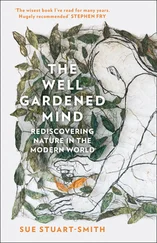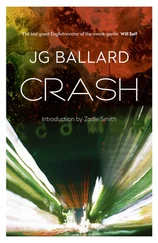I’ve always thought of myself as a realist. I can remember fighting with my professors about it in grad school. The world that I live in consists of 250 advertisements a day and any number of unbelievably entertaining options, most of which are subsidized by corporations that want to sell me things. The whole way that the world acts on my nerve endings is bound up with stuff that the guys with leather patches on their elbows would consider pop or trivial or ephemeral. I use a fair amount of pop stuff in my fiction, but what I mean by it is nothing different than what other people mean in writing about trees and parks and having to walk to the river to get water 100 years ago. It’s just the texture of the world I live in.
You had to fight to make this case in the 1990s, and writers like Wallace fought it in the face of a certain amount of critical ridicule and the general sense that it couldn’t be literature with a capital L if it let the trashy language of the contemporary in. Ten years later, few writers feel the need to defend this use of contemporary “texture,” and for the generation who grew up on Wallace, specialized language use amounts to realism of the first order: it’s the water they grew up swimming in.
But you can also think about water too much. You can forget how to swim. You can develop an extreme self-consciousness w/r/t form, and when this happens in Wallace’s work, we can clearly watch metafiction reclaiming him, almost eating him alive. In the story “Adult World,” a tale of extreme self-consciousness (a paranoid wife fears that the way she makes love with her husband is “somehow hard on his thingie”) devolves into an acute case of narrative self-consciousness, which concludes with the story falling apart. One half is written, but the other half is entirely deconstructed, offered only in the form of a writer’s schematic notes, unfinished, unfilled in. I remember how thrilled I was when I first read it-I thought it delicious that such a pyrotechnical stylist would be sufficiently honest to reveal the mechanical levers behind the Wizard of Oz facade. Ten years later I reread it and feel that the shock of the backstage glimpse is just that, a shock, and that it wears off and does not satisfy as the full story might have. “Octet,” an attempted “cycle of very short belletristic pieces” that are “supposed to compose a certain sort of ‘interrogation’ of the person reading them,” is another piece that suddenly falls apart (he only manages four of the eight), though in a far more astonishing fashion. As Wallace abandons his story cycle he tells us why: they “don’t interrogate or palpate” the reader as he’d wanted them to. What follows is an extremely manipulative breaking of the fourth wall, which, at the same time, claims to come from a place of urgent sincerity. Just like one of his own hideous men, Wallace assumes our consciousness; he parrots all our responses before we have them (he knows it looks manipulative, he knows this sounds like metafiction, and yes, he knows we know he knows .) He won’t stop, he hounds us relentlessly even through the footnotes, trying desperately to convince his readers that it’s not what we think he’s afraid of (which is failure). He knows, too, that “this 100%-honest-naked-interrogation-of-reader tactic” is an incredibly costly one, for him, for you, for your relationship with this book-hell, with David Foster Wallace, period. It’s my guess that how you feel about “Octet” will make or break you as a reader of Wallace, because what he’s really asking is for you to have faith in something he cannot possibly ever finally determine in language: “the agenda of the consciousness behind the text.” His urgency, his sincerity, his apparent desperation to “connect” with his reader in a genuine way-these are things you either believe in or don’t. Some writers want sympathetic readers; some want readers with a sense of humor; some want their readers at the political barricades, fired up and ready to go. Strange to say it, but Wallace wanted faithful readers. The last line of “Octet”?
“So decide.”
4. CHURCH NOT MADE WITH HANDS
It’s worth having faith in “Octet.” You miss something important if you throw it across the room unfinished, as I did when I first read it. Buried in the middle of it there is a sort of confession. Or as close to a nakedly honest statement as Wallace ever made w/r/t his literary intentions. He is ostensibly talking about the “semiworkable pieces” of “ Octet ,” but what he has to say applies to all his work:
[A]ll seem to be trying to demonstrate some sort of weird ambient sameness in different kinds of human relationships, some nameless but inescapable “ price ” that all human beings are faced with having to pay at some point if they ever truly want “to be with” another person instead of just using that person somehow (like for example using the person just as an audience, or as an instrument of their own selfish ends, or as some piece of moral gymnastics equipment on which they can demonstrate their virtuous character (as in people who are generous to other people only because they want to be seen as generous, and so actually secretly like it when people around them go broke or get into trouble, because it means they can rush generously in and act all helpful-everybody’s seen people like this), or as a narcissistically cathected projection of themselves, etc.), a weird and nameless but apparently unavoidable “price” that can actually sometimes equal death itself, or at least usually equals your giving up something (either a thing or a person or a precious long-held “feeling” or some certain idea of yourself and your own virtue/worth/identity) whose loss will feel, in a true and urgent way, like a kind of death, and to say that the fact that there could be (you feel) such an overwhelming and elemental sameness to such totally different situations and mise en scenes and conundra…-seems to you urgent, truly urgent, something almost worth shimmying up chimneys and shouting from roofs about. [86] [87]
There is a weird ambient sameness to Wallace’s work. He was always asking essentially the same question. How do I recognize that other people are real, as I am? And the strange, quasi-mystical answer was always the same, too. You may have to give up your attachment to the “self.” I don’t mean that Wallace “preached” this moral in his work; when I think of a moralist I don’t think of a preacher. On the contrary, he was a writer who placed himself “in the hazard” of his own terms, undergoing them as real problems, both in life and on the page. For this reason, I suspect he will remain a writer who appeals, above all, to the young. It’s young people who best understand his sense of urgency, and who tend to take abstract existential questions like these seriously, as interrogations that relate directly to themselves. The struggle with ego, the struggle with the self, the struggle to allow other people to exist in their genuine “otherness”-these were aspects of Wallace’s own struggle. One way to read Brief Interviews is as a series of intimate confessions of “other blindness.” Confessions of solipsism, of misogyny, of ego, of control freakery, of cruelty, of snobbery, of sadism. Of that old Christian double bind: the wish to be seen to be good . Speaking of “The Depressed Person” he said: “That was the most painful thing I have ever done… [T]hat character is a part of me I hardly ever write about. There is a part of me that is just like that person.” And then there’s the moderately overweight careerist poet in “Death Is Not the End.” It’s about as far from an autobiographical portrait of Wallace as one can imagine, but it’s fueled with a disgust that feels somehow personal. Wallace was constitutionally hard on himself, apparently compelled to confess not only to who he was but to who he dreaded being or becoming. “The fifty-six-year-old American poet, a Nobel Laureate,” recipient of basically every award and grant literary America has to offer (except the Guggenheim [88]a fact which seems to plague him, and pops up in a footnote apropos of nothing, as if it had thrust itself to the surface of the story in subconscious fury), is “known in American literary circles as ‘the poet’s poet’ or sometimes simply ‘the Poet,’ ” and he is truly selfhood experienced in its unbearable fullness. We get a meticulous description of his self, the exact spot in which he sits (in a lounger, by a pool, in a garden), as well as his exact coordinate in relation to the sun (as if it revolved around him). In short (well, in two gigantic recursive sentences), Wallace annihilates him. God help the man who has chosen to worship himself! Whose self really is no more than the awards he has won, the prestige he has earned, the wealth he has amassed. In our last glimpse of the Poet he is surrounded by his expensive shrubbery, which is “motionless green vivid and inescapable and not like anything else in the world in either appearance and suggestion.” A footnote adds: “That is not wholly true.” Green, vivid, motionless, inescapable? Sounds like money to me.
Читать дальше
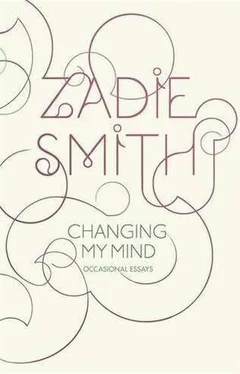
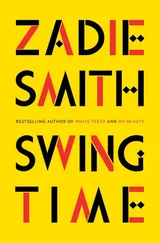

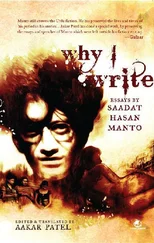

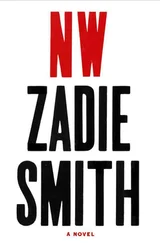


![Джон Харгрейв - Mind Hacking [How to Change Your Mind for Good in 21 Days]](/books/404192/dzhon-hargrejv-mind-hacking-how-to-change-your-min-thumb.webp)
